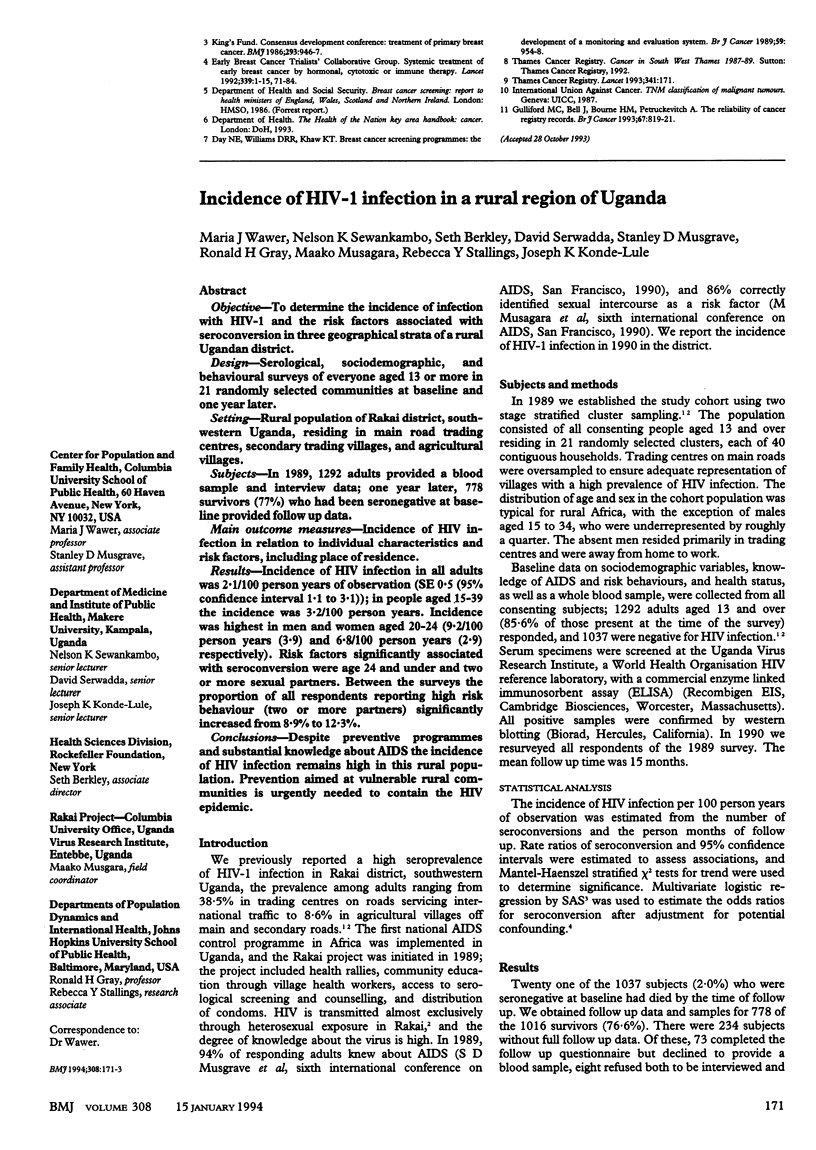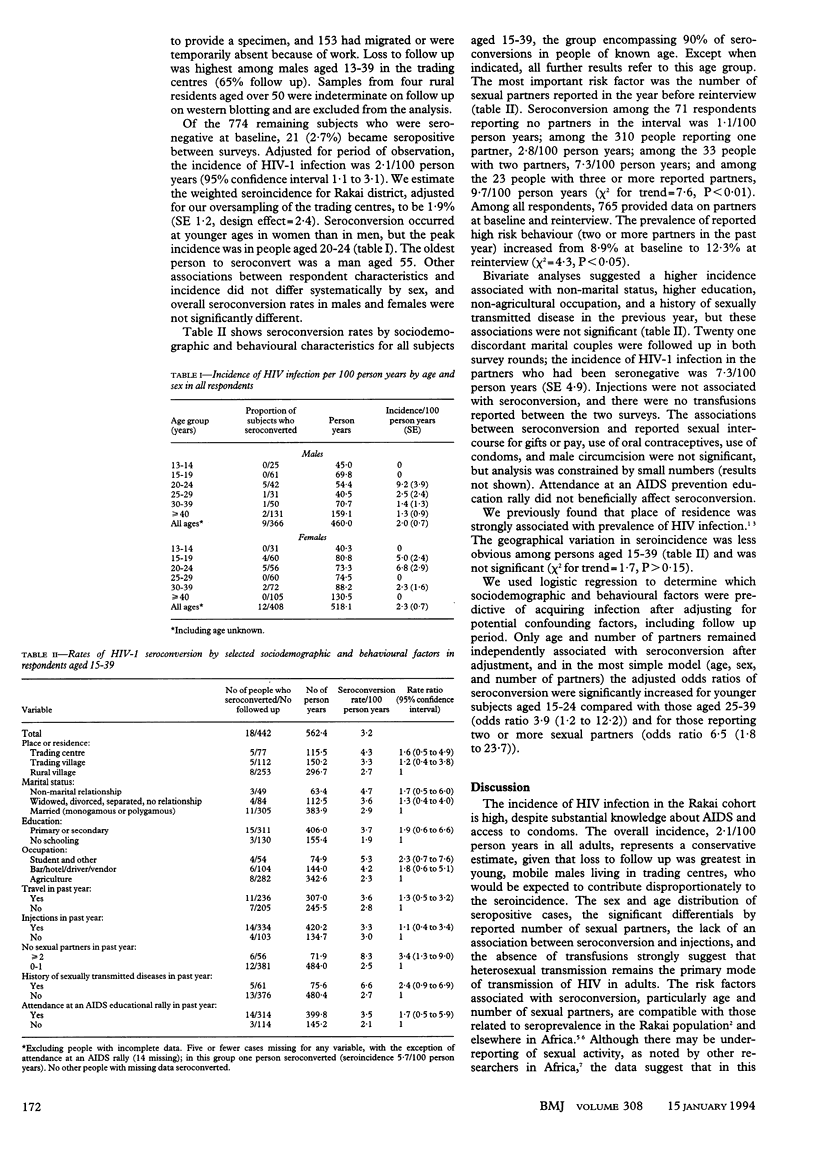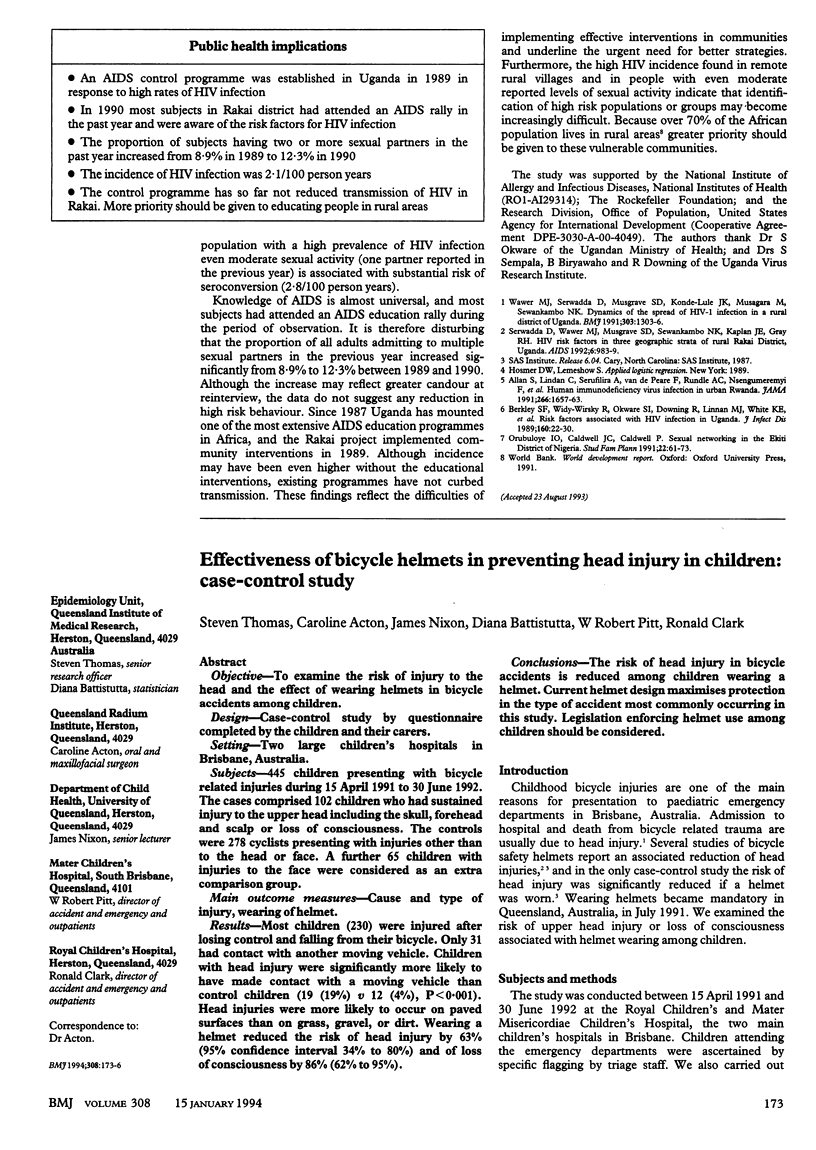Abstract
OBJECTIVE--To determine the incidence of infection with HIV-1 and the risk factors associated with seroconversion in three geographical strata of a rural Ugandan district. DESIGN--Serological, sociodemographic, and behavioural surveys of everyone aged 13 or more in 21 randomly selected communities at baseline and one year later. SETTING--Rural population of Rakai district, southwestern Uganda, residing in main road trading centres, secondary trading villages, and agricultural villages. SUBJECTS--In 1989, 1292 adults provided a blood sample and interview data; one year later, 778 survivors (77%) who had been seronegative at baseline provided follow up data. MAIN OUTCOME MEASURES--Incidence of HIV infection in relation to individual characteristics and risk factors, including place of residence. RESULTS--Incidence of HIV infection in all adults was 2.1/100 person years of observation (SE 0.5 (95% confidence interval 1.1 to 3.1)); in people aged 15-39 the incidence was 3.2/100 person years. Incidence was highest in men and women aged 20-24 (9.2/100 person years (3.9) and 6.8/100 person years (2.9) respectively). Risk factors significantly associated with seroconversion were age 24 and under and two or more sexual partners. Between the surveys the proportion of all respondents reporting high risk behaviour (two or more partners) significantly increased from 8.9% to 12.3%. CONCLUSIONS--Despite preventive programmes and substantial knowledge about AIDS the incidence of HIV infection remains high in this rural population. Prevention aimed at vulnerable rural communities is urgently needed to contain the HIV epidemic.
Full text
PDF


Selected References
These references are in PubMed. This may not be the complete list of references from this article.
- Allen S., Lindan C., Serufilira A., Van de Perre P., Rundle A. C., Nsengumuremyi F., Carael M., Schwalbe J., Hulley S. Human immunodeficiency virus infection in urban Rwanda. Demographic and behavioral correlates in a representative sample of childbearing women. JAMA. 1991 Sep 25;266(12):1657–1663. [PubMed] [Google Scholar]
- Berkley S. F., Widy-Wirski R., Okware S. I., Downing R., Linnan M. J., White K. E., Sempala S. Risk factors associated with HIV infection in Uganda. J Infect Dis. 1989 Jul;160(1):22–30. doi: 10.1093/infdis/160.1.22. [DOI] [PubMed] [Google Scholar]
- Orubuloye I. O., Caldwell J. C., Caldwell P. Sexual networking in the Ekiti district of Nigeria. Stud Fam Plann. 1991 Mar-Apr;22(2):61–73. [PubMed] [Google Scholar]
- Serwadda D., Wawer M. J., Musgrave S. D., Sewankambo N. K., Kaplan J. E., Gray R. H. HIV risk factors in three geographic strata of rural Rakai District, Uganda. AIDS. 1992 Sep;6(9):983–989. doi: 10.1097/00002030-199209000-00012. [DOI] [PubMed] [Google Scholar]
- Wawer M. J., Serwadda D., Musgrave S. D., Konde-Lule J. K., Musagara M., Sewankambo N. K. Dynamics of spread of HIV-I infection in a rural district of Uganda. BMJ. 1991 Nov 23;303(6813):1303–1306. doi: 10.1136/bmj.303.6813.1303. [DOI] [PMC free article] [PubMed] [Google Scholar]


